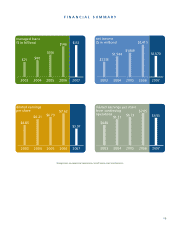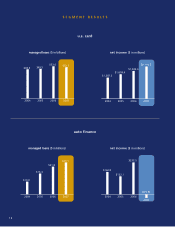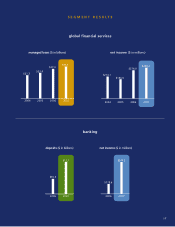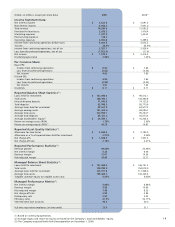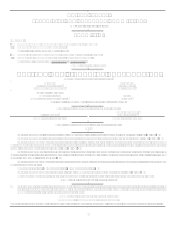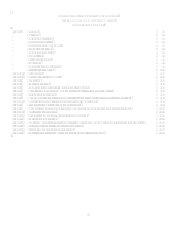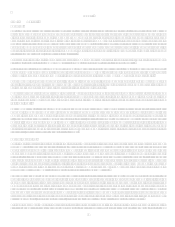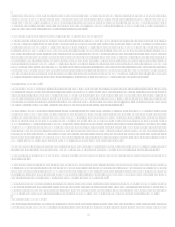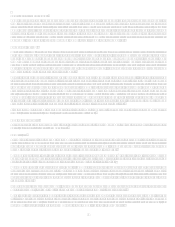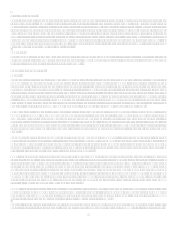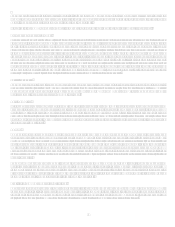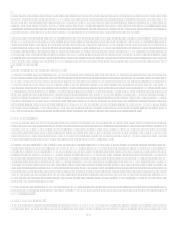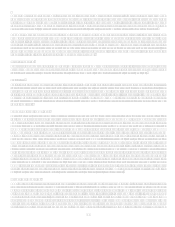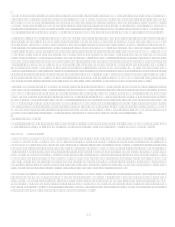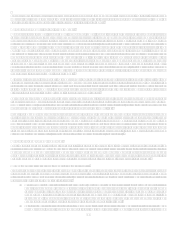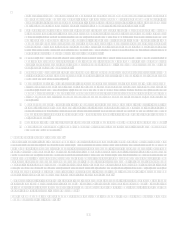Capital One 2007 Annual Report Download - page 27
Download and view the complete annual report
Please find page 27 of the 2007 Capital One annual report below. You can navigate through the pages in the report by either clicking on the pages listed below, or by using the keyword search tool below to find specific information within the annual report.5
partners and to comply with applicable laws and regulations. We also have a compliance training program and an associate
performance management process that emphasize achieving business results while ensuring integrity, legal compliance and sound
business management. Our risk management culture is also encouraged through frequent direction and communications from the
Board of Directors, senior leadership, corporate and departmental risk management policies, risk management and compliance training
programs and on-going risk assessment activities in the business.
Organizational Structure for Risk Identification, Monitoring and Reporting
Our organizational structure supports consideration of risk in decision making. We monitor our key risks, mitigation plans and our risk
management capability through a system of on-going measurement and reporting to business area management, the Chief Risk
Officer, senior management committees and the Board and its committees. The corporate Risk Management department designs and
facilitates the implementation of methodologies to (i) identify and assess risk; (ii) analyze and aggregate risk; (iii) facilitate and
support mitigation reporting; (iv) and evaluate and enhance the risk management culture. Each business area uses these methodologies
to identify key risk exposures which are assessed according to potential likelihood and impact, as well as, the quality of the related
controls. If appropriate, risk response plans are developed and progress is monitored against the response plans. For significant risks
reported to the senior management committees and the Board, specific executives are designated as accountable for the management
and monitoring process. Across the Company, individual business areas utilize Business Risk Offices staffed by business associates to
oversee implementation of methodologies and tools for risk identification, assessment and reporting. Our Corporate Audit Services
department also assesses risk and the related quality of internal controls and risk management through its audit activities. Corporate
Audit Services reports on the scope and results of its work to the Audit and Risk Committee of the Board of Directors.
Credit Risk Management
Successful management of credit risk, the risk that borrowers may default on their financial obligations to us, is critical to our success.
There are four primary sources of credit risk: (1) changing economic conditions, which affect customers ability to pay and the value
of any collateral; (2) changing competitive environment, which affects customer debt loads, borrowing patterns and loan terms; (3) our
underwriting strategies and standards, which determine to whom we offer credit and on what terms; and (4) the quality of our internal
controls, which establish a process to test that underwriting conforms to our standards and identifies credit quality issues so we can act
upon them in a timely manner. We are focused on managing each of these sources of credit risk.
The overall management of credit risk is the responsibility of the Chief Risk Officer who is supported by a Commercial Chief Credit
Officer and a Consumer Chief Credit Officer. The goal of the Chief Credit Officers is to provide strong central oversight of credit
policy and credit programs in the consumer and commercial lending businesses while maintaining the ability of operating units to
respond flexibly to changing market and competitive conditions. The Chief Credit Officers are assisted by the Credit Policy
Committee, a committee of senior management that oversees and approves corporate credit policy and credit performance. The Credit
Policy Committee also has sub-committees which provide credit oversight at the divisional level. The Chief Credit Officers or their
staff review and approve all large scale new credit decisions or programs. Smaller credit decisions are made by credit officers
approved by the credit committee(s). These organizational structures are designed so that each of our business units applies
standardized practices in measuring and managing credit risk, and that all relevant factors, such as credit outlook, profitability, and the
competitive, economic, and regulatory environments, are considered in making credit decisions.
The Board of Directors has established policies that govern credit administration and limit the level and composition of risk in the
total lending portfolio. The Credit Risk Management group monitors the overall composition and quality of our credit portfolio.
Our credit risk profile is managed to maintain resilience to factors outside of our control, strong risk-adjusted returns, and
diversification.
Our guiding principles, strong central governance, and Board-directed credit risk tolerances are designed to keep senior executives
well-informed of credit trends so they can make appropriate credit and business decisions. We preserve day-to-day market
responsiveness and flexibility by empowering our business line managers to develop credit strategies and programs aligned with our
credit risk policies and objective of long-term business profitability. The credit program development process considers the evolving
needs of the target market, the competitive environment, and the economic outlook.
Most of our consumer credit strategies rely heavily on the use of sophisticated proprietary scoring models. These models consider
many variables, including credit scores developed by nationally recognized scoring firms. The models are validated, monitored and
maintained in accordance with detailed policies and procedures to help ensure their continued validity. Our Chief Scoring Officer, a
member of the Chief Risk Officers staff, oversees the development, implementation and maintenance of key statistical models.
Liquidity Risk Management
Liquidity risk refers to exposures generated from the use and availability of various funding sources to meet our current and future
operating needs. The management of liquidity risk is overseen by the Chief Financial Officer with advice and guidance from the Asset


